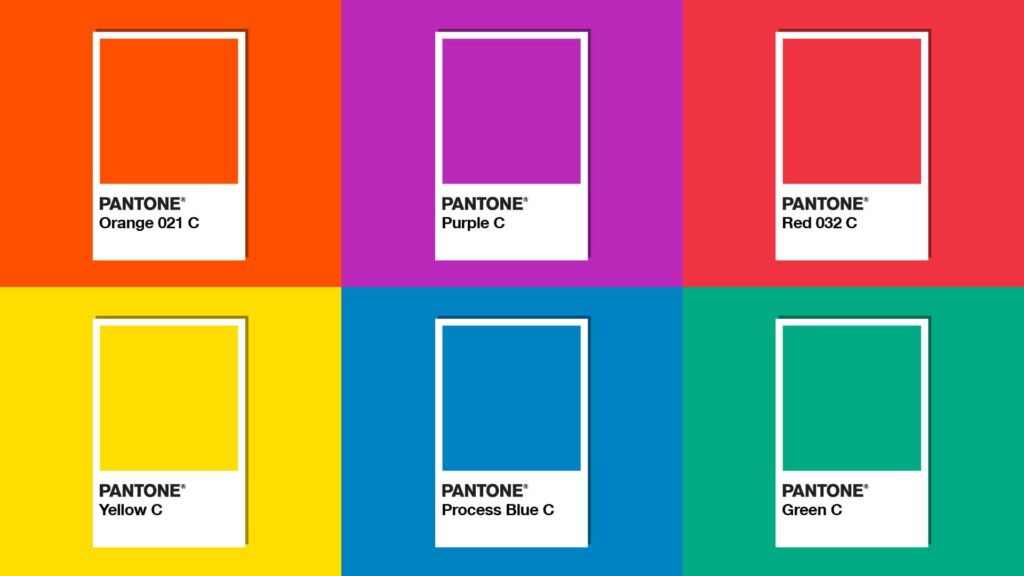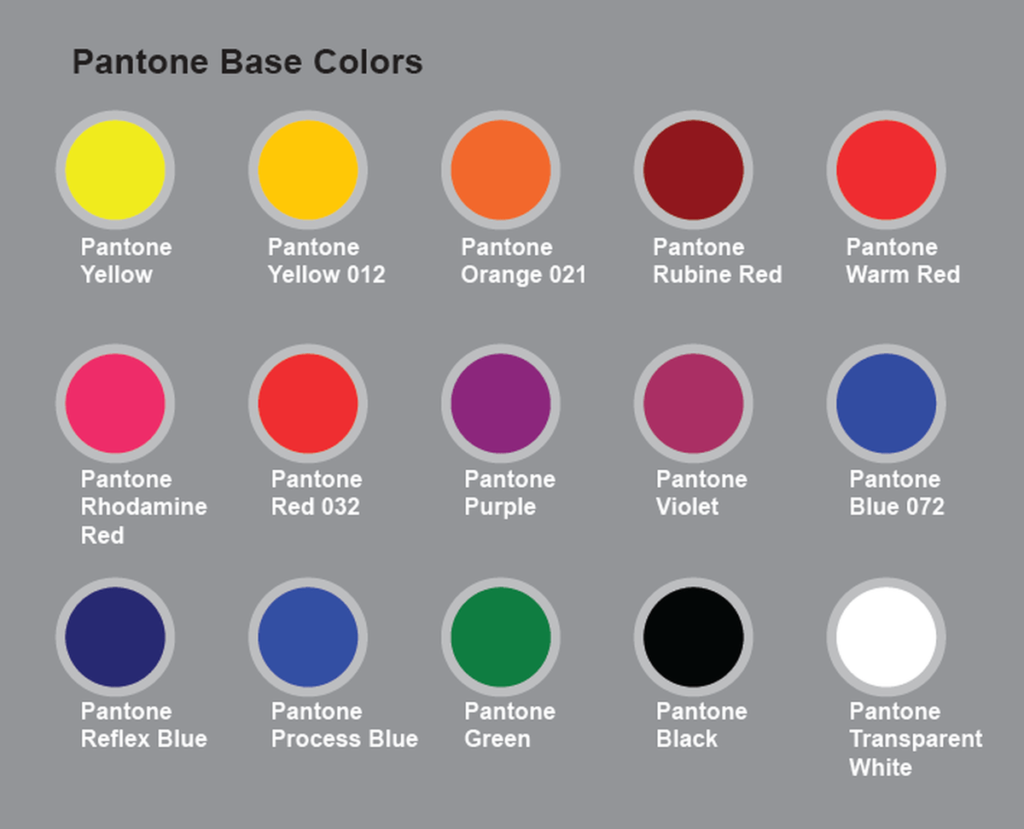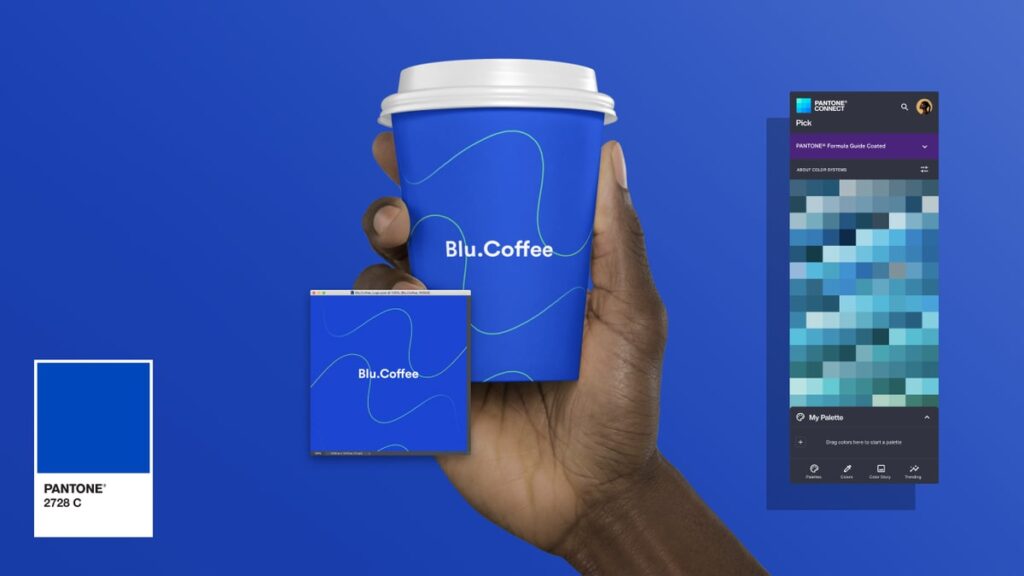Pantone Matching System: A Guide for Designers
Pantone is an industry leader in colour psychology and has been for decades.
As the first colour system to ever gain widespread acceptance, the Pantone Matching System has played a significant role in shaping the colours used for everything from fashion and interior design to photography and film.
If you’re running a digital marketing agency, you’ll know the importance of matching colours and fonts across multiple platforms. But the truth is that your clients can become frustrated and confused when they see the colour of the logo and font on your client website look different from that of their email signature, social media banner, or even their call to action button.
If you can’t get your clients to transition seamlessly between their branding and your digital marketing, you’ll struggle to generate conversions. This is where the Pantone Matching System comes in.
Pantone has become famous for its colour guides and design tools. But Pantone isn’t just about colours. Lawrence Herbert developed Pantone Color Matching System (CMS) in 1963 to help designers produce repeatable and consistent results.
Pantone has been used in marketing and advertising for decades, but it’s only recently that Pantone has taken centre stage in designing, making colour trends easier to forecast and understand.
With the world’s most prominent colour database, you can create a design system to help your team work smarter and faster.
Table of Contents
What is Pantone?

Pantone is the world’s leading authority on colour, colour trends, and colour science. Their Color Matching System® (CMS) is used to communicate and match colours used in packaging, advertising, and graphic design.
Pantone was created by artists working with paint colourants and colour mixing on the canvas. Today, we’re looking at the colour wheel to see the relationship between colour and emotion. The colour wheel allows us to identify and classify the emotional impact of colours quickly.
How the Pantone Matching System Works
The Pantone Matching System uses the exact colour of the print to match the colour of the print exactly. There are 12 primary colour groups (called “Pantone families”). Each group contains six primary colours that create the different shades and tints of the colours used in today’s fashion, design and home decorating.
When using Pantone, designers and stylists will often use one of three different types of prints to achieve a specific colour in their work.
First, designers and stylists can use solid colours. Solid colour means that all the parts of the colour are the same.
Second, designers and stylists can use complementary colours. A complementary colour is the opposite of another colour. For example, blue and red are complementary colours. Red is the opposite of blue. To get the colour of a solid colour, use the opposite Pantone family, and you have the colour of the complementary colour.
Third, designers and stylists can use analogous colours. An analogous colour is similar to another colour. For example, green and yellow are analogous colours. Both colours are similar in nature, and their lightness and darkness are similar.
You know which type of colour is used to create specific colours. Let’s use an example of creating a blue. If the Pantone family used for blue is PANTONE 29-1451, you will use the Pantone family of orange (PANTONE 30-1561).
Then, you can change the amount of grey used in the Pantone 29-1451 colour to get the lighter version of blue. If you want the darker blue, you can add more of the Pantone 30-1561 colour in the mix.
In theory, the Pantone Matching System makes finding a perfect colour match easy. But like any formula, it has its limitations. The system doesn’t work when there’s an exact match for a colour. The colour must be close to the colour you’re looking for.
It also won’t work if you’re looking for a specific shade of colour. Instead, it provides a list of similar colours so you can experiment until you find the colour you’re looking for.
In its most basic form, the Pantone Matching System relies on a colour wheel, which contains a series of colours arranged in a radial pattern. Each colour represents a hue, and the colours are spaced to represent their intensity or value.
When a designer creates a colour palette using the Pantone Matching System, they must consider the effects of light and temperature. The colour wheel also serves as a tool for the designers to achieve harmony in colour schemes.
The Three Colour Guidelines

The three-colour guidelines is a system of colour combination based on psychological principles that can help a designer convey emotion and mood to a viewer. The colours should create a positive impression but also not distract the viewer.
Colours communicate information quickly, and the brain is always trying to interpret and filter the information it receives. This is why colours can influence us so powerfully.
The three guidelines are the following:
1. You must use colour in moderation.
2. Colours should complement one another.
3. Contrasting colours help to convey the idea of importance.
Why does Pantone Matter?
What’s the deal with the Pantone colour of the year, anyway? As a brand, colour can be one of your greatest marketing tools. It can give your company a personality or even an industry.
When used strategically, it can help increase conversions and boost revenues. What’s more, colour is also something you can control and mould to your brand personality. For example, you can use a specific colour to target a specific audience. You can also use colour to convey a particular message and communicate with your customers.
Because of its massive influence in the design world can help predict trends and gauge how people will respond to confident colour choices in various applications. So knowing that a particular shade will match a specific design perfectly can help you plan out how to best use it in your next project.
Pantone may not seem like a design tool, but it is one of the best design tools. It helps designers understand colour trends and keep their brand colours consistent throughout their brand identity, website and print projects.
It’s a great way to ensure your colours don’t look too similar to your competitors’. It’s also a great way to help set a mood and create an emotional connection with your customers.
How to Find Pantone Colors

Finding the right colour for your site can be tricky. There are tons of websites offering up colour guides for you to use. But these often aren’t exactly what you’re looking for.
A simple Google search will help you find colour charts and swatches that give you some ideas, but finding a perfect match for your business could be challenging. Luckily, Pantone is here to help.
There are several things to keep in mind regarding colour marketing. The first thing to note is that your colour scheme must work together.
Think about the colours used on packaging and signage around the company. If you’re using different colours for your brand and your product, it could cause your products to appear mismatched.
If you’re going to use colours for branding purposes, coordinate your colours with your packaging and logo. If you want to use a particular colour for a specific promotion, use it consistently across all communications. And always take note of what colours your customers respond to.
How to Mix Pantone Colors

Pantone offers a colour-matching system for businesses and designers to match colours and design elements within specific product categories. But what’s interesting is that Pantone uses three colours in the entire process to match colours, which are then paired with two more colours to define shades and tints. This means that you can use any three primary colours to match anything in your possession.
Pantone’s website is full of information about the colour wheel and colour trends, but here’s the most valuable thing you need to know to start mixing colours: colour wheels don’t mix. You can’t just take a red hue and add blue or yellow. There’s a reason you see the same colours together. They’re complementary.
Pantone gives you a range of colour options. You can’t always expect to match perfectly, but you can usually get pretty close.
If you want to create a mood or atmosphere appropriate for your brand, you need to know how to choose cohesive colours. Each hue has a specific colour temperature, meaning how bright or dull it appears. To create a certain mood or ambience, it’s essential to know how to choose colours that work together.
Pantone Colour Guides
I don’t know about you, but when I look at a colour, my brain doesn’t just register the colour. It registers what kind of emotion it makes me feel.
There’s research to back up this theory. In 2003, psychologists at the University of California Berkeley showed that the human brain could differentiate between emotional responses to colours closely associated with one another.
For example, red can be perceived as both hot and fearful (among other things), whereas yellow can be perceived as both warm and gentle. And this is why, even though you may not recognise the exact shades of red and yellow printed on products like t-shirts and sweaters, you intuitively know that one shirt is a different shade than the next.
I’m not sure if you’ve ever read a Pantone colour guide before, but I’m sure it’s the most helpful tool in my selling tips. The guides are straightforward to understand and are very well-designed. They also help me visualise a product and make the colours of that product much easier to conceptualise.
Conclusion
Pantone colours are a great way to add visual interest to your brand and guide your audience through a certain mood or theme. You can choose a colour palette that suits your identity and can be used throughout your design, regardless of your industry or project.
When creating a colour scheme, it is essential to consider your audience. This will allow you to connect with your audience in a meaningful way.
You can also create a colour story that relates to your brand and connects with your audience. These ideas can be easily translated to any project, from print design to web design to graphic design.
Get started with our guide to the Pantone Matching System for making your next design colour perfect.
